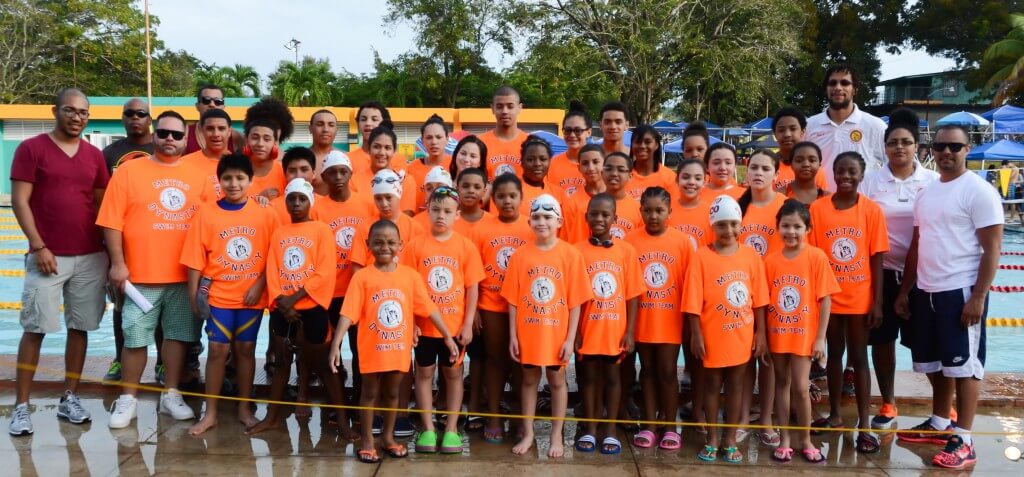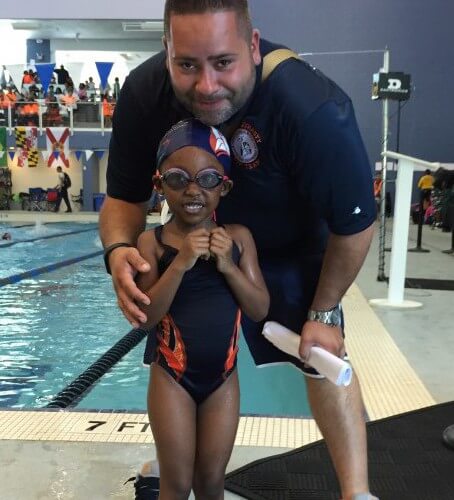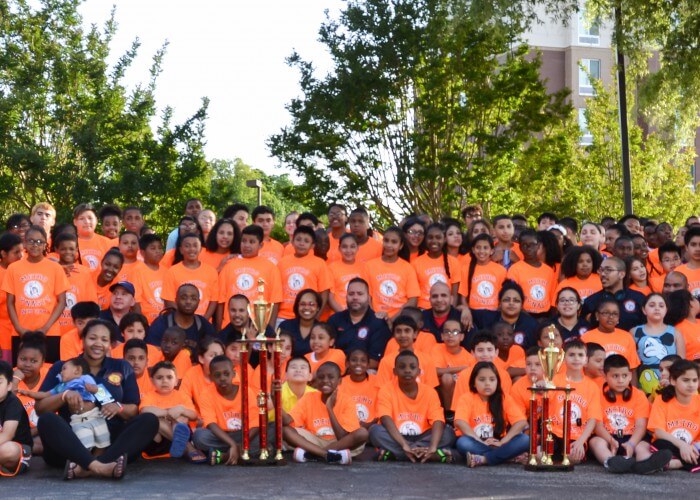The Metro Swim League is Building a Dynasty and Diversifying the Sport

By Cathleen Pruden, Swimming World College Intern
The Metropolitan Swim League has been swimming dual meets since the 1950s in poor New York City neighborhoods, pursuing its mission of keeping children off the streets and providing them a range of opportunities in and out of the pool. Now into its second half century, the league continues to grow in numbers and impact.
In 2007 Eddie Oyola took over the league that he grew up swimming for, and began rethinking the existing approach to swimming for inner city kids. Oyola had been coaching a USA swim team that was predominantly white when he became acutely aware of the absence of diversity in New York City swimming.
“I would get looked at weird…because I am of Latino decent and there were not many coaches of African American and Latino descent,” Oyola recalled. Determined to change that reality, he began a quest to push the League’s teams to “go forward and explore new opportunities for our swimmers.” The league has since added ten swim clubs, hundreds of swimmers, and many meets.
Building a Foundation
Efforts to grow and diversify the sport had to start with the fundamentals. Inner city children needed to learn swimming and water safety, no small challenge in underserved urban communities, before they could participate at the competitive level. To meet this pressing need, all of the League clubs offer swim lessons for free or at low cost, with the graduates of these lessons becoming the basis of the League’s growing membership.
Teams in the Metro Swim League face the same challenges that plague most of the competitive swimming community- a lack of pool space and high costs. But the League also faces distinctive issues since 95 percent of its swimmers are Latino, African-American, and Asian living in underserved communities.
“In poor communities, sports like basketball, baseball and soccer are king,” Oyola explains, and “many people don’t know what swimming entails.”
Basic questions abound: “Why do you swim in the winter?” and “What can I do about my child’s hair?” Providing the answers to these questions and educating the minority community about the sport of swimming has been a critical aspect of the Metro Swim League’s success.
The educational process continues beyond the fundamentals.
“We teach our parents and swimmers what is needed to be successful and how seriously they have to take it if they want some type of success,” explained Oyola. The lessons have been well-learned, with Metro Swim League members embracing swimming’s daily long practices and reaping the rewards at national competitions.
Making an Impact
When the League travels to compete, they do so as the Metro Dynasty Swim Team. Competitively, their biggest triumph has been winning the National Black Heritage Championship Swim Meet the past three years. Of equal importance, they have broadened their swimmers’ horizons and motivated them by traveling to Puerto Rico on multiple occasions.
These travel opportunities have energized the Metro Dynasty swimmers, helping them develop a greater drive and a dedication to the sport once they realize what it means to represent their team and compete at a higher level. The work ethic the swimmers develop produces rewards not only in the pool, but also in their school and home lives.
Essential to the effort to achieve diversity is the fact that the opportunities come at a reasonable cost. Lamar Decasseres, the team’s volunteer photographer and the father of two Metro Dynasty swimmers, is grateful that his children are able to swim and travel “all at a fee that was less than half what other USA Swimming Clubs charge.”
“Thanks to his [Oyola’s] low registration costs, many inner city kids are given an opportunity to compete with the same kids who are registered members of the other swim clubs in USA Swimming.” This is no small part of what makes the Metro Swim League so important.
The skills they learn through competitive swimming allow League swimmers to make a positive contribution to the community, with many of Oyola’s swimmers serving as lifeguards at area pools and beaches.
Innovation
Despite their success to date, nobody in the Metro Swim League is resting on their laurels. The mission to diversify the sport of swimming continues. Erik Diaz, an alumni and current Metro Swim League coach, created Pinero Swim Club, a company that aims to create a swimwear line that caters to a more diverse population. Recognizing that his swimmers are very interested in sneakers and fashion, Diaz designed eye catching swim caps. He also creates Metro Dynasty team caps with unique designs for each event.
“Kids in the inner city are turned off by having to look a certain way. The idea [Diaz] has is to make the swimmer feel good in what they wear and how they look, just as basketball has done with their sneakers,” Oyola explained. “Urban wear and style will attract more kids when it is cool-looking. Once you have them hooked with that, you have a swimmer for life.”
Ultimately, that is the goal and in offering these opportunities, the League and team not only diversifies swimming but also serves the community, achieving the kind of success that cannot be measured by a stopwatch.
To follow their efforts, check out the @diversifiedswimming and @pinero_swim_club Instagram pages.





